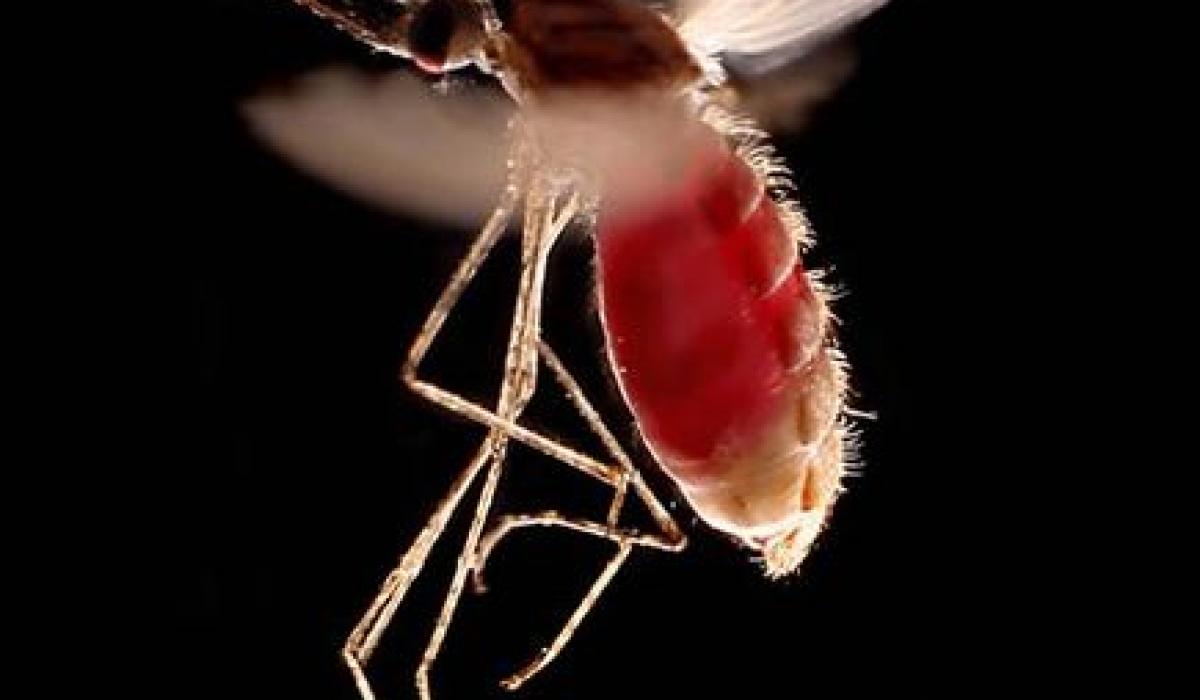
The Anopheles latens mosquito (part of the An. leucosphyrus group) is an important vector for the transmission of malaria in humans and monkeys in Southeast Asia. It is an important vector for the transmission of human malaria in Sarawak; but because it is attracted to both humans and to macaques it is also responsible for the transmission of simian malarias to humans (Plasmodium knowlesi and possibly P. inui as well).
A. latens tends to bite from 6 p.m. throughout the night, peaking at midnight. It is found in forests and at forest fringes, but tends not to enter human dwellings.
Anopheles latens has been collected more frequently in the canopy than at ground level in lowland secondary dipterocarp forests in peninsular Malaysia and is found in environments that have been altered by human activities, for example, areas of secondary forest with fruit and rubber plantations. In Sarawak, An. latens was found to be more abundant and malaria transmission more intense at farms located in forest fringe areas than in village settlements further removed from forest. In Kapit District of Sarawak nearly 90% of females attracted to humans were collected in forest and at a farm located amid fruit trees and secondary vegetation. In contrast, only 10% were collected in a longhouse home surrounded by trees and shrubs near a river, and of these, 71% were collected outdoors.
Larval habitats of An. latens are mostly shaded temporary pools and natural containers of clear or turbid water on the ground in forest areas. It has been noted that larvae of An. latens were usually found in clear seepage pools in forest swamps in peninsular Malaysia. In Sarawak, larvae have been found in pools beside a forest stream and in swampy patches in hilly country. Habitats occupied by An. latens in Thailand include stump ground holes, sand pools, ground pools, flood pools, rock pools, stream pools, stream margins, seepage-springs, wheel tracks and elephant footprints.
An. latens females bite throughout the night, but peak activity occurs at different times in different locations. Biting females have been found to be more abundant between 24:00 and 02:00 in mountainous areas. Peaks of activity from 22:00 to 04:00 during the dry season and from 22:00 to 24:00 in the wet season in the Akah River region have been observed and in village settlements in the Baram District, peak activity occurred soon after dusk whereas in forested areas biting was most prevalent around midnight. Adults do not rest in houses by day, but will enter to bite at night, mostly after 22:00.
The species is important vector of malaria in areas where they occur. Anopheles latens is a primary vector of human malaria in forested areas and villages near forests in Sarawak. In addition to human malarial parasites, An. latens is also known to transmit the monkey malarial parasite Plasmodium knowlesi to humans in the Kapit District of Sarawak.
| BACK | Source MAP |
